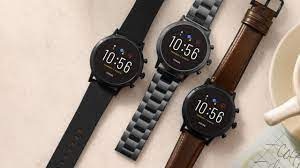Lies, like it or not, are part of the daily interaction of people all over the world. If you said one or, at least, acted as a receiver, you should know that distinguishing between reality and deception is not an easy task.
Although there is no 100% effective way to detect a lie, people keep trying. Some analyze body language, and others choose to ask neutral questions and a few “hooks” during the conversation in hopes that the sender of the message will fall within the strategy.
Now, a group of researchers from the University of Amsterdam has come up with a new technique: Look at the level of detail the person uses to tell their story. The premise is easy, those who give specific descriptions in a story are more likely to tell the truth, than those who limit themselves to telling their narrative in general.
Related topics
(Also read: An algorithm to know when you are lying, among the winners of the IG Nobel Prize 2022).
It may take a little longer to get used to analyzing the details, but when done effectively, deception can be detected with up to 80 percent accuracy, according to the research. The trick is to pay close attention to details such as the who, what, when, how and why of the issuer’s story.
“It’s very illogical to just listen to what people say and not pay attention to all kinds of other cues, like how persuasive or emotional someone is conveying their story,” explains Bruno Verschuere, professor of forensic psychology and lead author of the study. . “But people who tell the truth can give a rich description because they actually experienced the event.”
(Keep reading: The words liars use the most on WhatsApp, according to a study.)
To reach this conclusion, the group of researchers conducted a series of laboratory experiments. Specifically, he divided a group of students into the guilty and the innocent. The former is instructed to steal an exam from a locker; While the latter was required to spend half an hour on campus doing other types of activities, such as going to the library, eating, or calling a friend. After that, both of them were asked to state what happened during that time.
After conducting this experiment, the researchers asked 1,445 people to rate the statements of the guilty and innocent students. Although they attempted to analyze the body language and the emotionality of the message, their techniques did not bear fruit.
When asked to rely solely on the amount of detail (place, person, time, location) in a story, they were able to consistently tell lies from truth. The study is from the University of Amsterdam.
Verschuere, the lead author of the research, noted that sometimes relying on one good cue (such as detail) can be more effective than analyzing a bunch of cues at once. For him, “the truth can be found by simplicity.”
(Important: Want to know if you’re lying? This is how scientists use it.)
“What we propose is to eliminate rather than add evidence when it comes to detecting deception (…) To deal with the information overload, it is better to ignore it. Sometimes less is more,” explained the professor of forensic psychology.
More news at EL TIEMPO
Ariana Grande talks about her body and the disease she suffers from
Carolina Soto from the group “Día a Día” danced the mabali and in the nets they called “severe”
‘I was baffled’: ‘Fat Ariel’ remembered when he got kicked out of ‘Dia Dia’
Valeria Castro Valencia
Write the numeric range
the time




